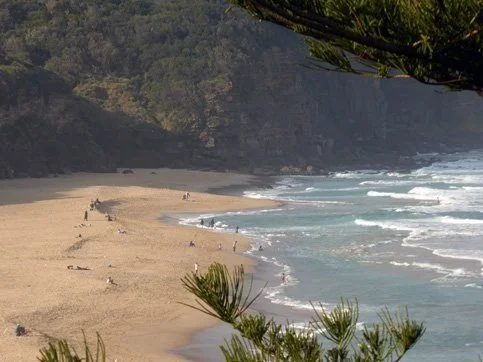Water Safety and Ocean Swimming
This is the former lifeguard station; the new one is more impressive.
Riptides are common
The water is warm and inviting, there are great waves for surfing, so what’s the problem? It’s not a problem, per se, but you do have to observe some safe ocean swimming rules when in Dominical and Costa Rican beaches in general. The main issue is the frequency of riptides, which can sweep swimmers offshore and quickly tire them out if they struggle against the current. This discussion is broken into two parts: when riptides are apt to happen, and what to do if you’re caught in a riptide.
If you’re concerned about riptides or unsure of your ocean swimming skills and you still want to go for a swim, we highly recommend that you swim in front of the salvavidas or lifeguards, who have a station in front of Dominical. They are trained to warn swimmers of areas where riptides are common, using red flags on the beach.
When do riptides form?
You’ll hear descriptions of when riptides form like “two hours before low tide” or “at high tide” or something else. Our experience is that you have to be vigilant all the time, and watch the surf carefully before going for a swim. They are frequently associated with low tide when there is a sandbar along the shore.
Riptides are easiest to see from an elevated viewpoint: a raised portion of the beach, or a point of land, or possibly a building. Often the outgoing current knocks down the surf, and you may be able to see swirling water and sand that is carried out to sea.
Another potential sign of where a riptide might form is when there are “highs” and “lows” on the shore, where the sand has built up in some areas and has been eroded in others. The riptides will flow offshore in the “low” areas, and they will be fed by water from the higher surrounding areas.
This image shows an example of where riptides are likely to form. See the crescent-shaped indentation in the shoreline? See the water running offshore in what appears to be a narrow stream? This is a characteristic of riptides, and can be seen on the beaches in Dominical.
How do I escape from a riptide?
The key to escaping a riptide is to not fight against it by swimming back to shore directly. The beach may be close, but the current is faster than you can swim. Since riptides are narrow, your best escape path is to swim parallel to the beach. Alternatively, since riptides lose their strength and speed as they go offshore, tread water for a while to let it lose its strength, then swim to the side.
Remember:
Never swim alone.
If in doubt, swim where the lifeguards are present.
Survey the beach and water for signs that there may be a riptide in that area.



